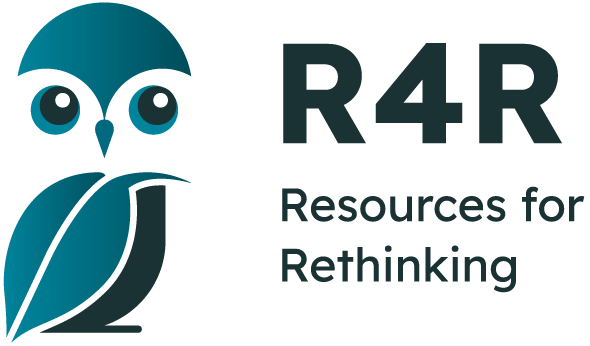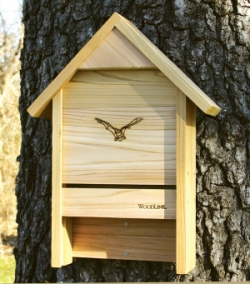- Home
- Tutorial
- Resource Guides
- Focus Areas
- LSF Programs
-
Professional
Development - Review Process
-
A project of LSF

Search for Resources
Description
This interesting resource teaches students about bats in an effort to dispel negative myths and demonstrate the important contributions these animals make. It offers both a teacher's guide and a student booklet. The teacher's guide includes an introduction to six lessons as well as a number of activities, bat riddles and plans for building a bat house. Lessons are supported with additional resources and background information.
The student booklet includes a story about bats and five support activities. In addition to learning about the structure and behavior of bats, students will build bat houses, take part in predator-prey games that incorporate food chain concepts, make bat fruit salad and research different kinds of bats. Pre and post tests to determine student attitudes towards bats are included with the resource.
General Assessment
What skills does this resource explicitly teach?
The resource teaches to look critically at information and to carry out research in order to dispel myths about bats. Attitudes can change once exposed to correct information.
Strengths
- Using a story to include informational text was an effective motivator.
- The integration of art, drama and movement made the resource interesting.
- The story and some of the activities could also be used for weaker and for older students.
Weaknesses
- Very teacher directed
- Lacking in assessment and evaluation suggestions
Relevant Curriculum Units
The following tool will allow you to explore the relevant curriculum matches for this resource. To start, select a province listed below.
- Step 1Select a province
- Alberta
- Step 2Select a grade level
- Kindergarten
- Step 3Select a subject
- Science
- Step 4Relevant matches
- Earth Systems: Understandings of the living world, Earth, and space are deepened by investigating natural systems and their interactions.
- British Columbia
- Step 2Select a grade level
- Grade 1
- Step 3Select a subject
- Science
- Step 4Relevant matches
- Science 1: Living things have features and behaviours that help them survive in their environment
- Grade 2
- Step 3Select a subject
- Science
- Step 4Relevant matches
- Science 2: Living things have life cycles adapted to their environment
- Grade 4
- Step 3Select a subject
- Science
- Step 4Relevant matches
- Science 4: All living things sense and respond to their environment
- Manitoba
- Step 2Select a grade level
- Grade 1
- Step 3Select a subject
- Science
- Step 4Relevant matches
- Characteristics and Needs of Living Things
- Life Systems
- Grade 2
- Step 3Select a subject
- Science
- Step 4Relevant matches
- Growth and Changes in Animals
- Grade 4
- Step 3Select a subject
- Science
- Step 4Relevant matches
- Habitat and Communities
- Life Systems
- New Brunswick
- Step 2Select a grade level
- Grade 1
- Step 3Select a subject
- Health Education
- Step 4Relevant matches
- Explore Your World: Diversity and Social Responsibility
- Science
- Step 4Relevant matches
- Explore Your World: Diversity and Social Responsibility
- Social Studies
- Step 4Relevant matches
- Explore Your World: Diversity and Social Responsibility
- Newfoundland & Labrador
- Northwest Territories
- Step 2Select a grade level
- Grade 1
- Step 3Select a subject
- Science
- Step 4Relevant matches
- Life Systems: Characteristics and Needs of Living Things
- Science 1: Living things have features and behaviours that help them survive in their environment
- Grade 2
- Step 3Select a subject
- Science
- Step 4Relevant matches
- Life Science: Growth and Changes in Animals
- Science 2: Living things have life cycles adapted to their environment
- Grade 4
- Step 3Select a subject
- Science
- Step 4Relevant matches
- Science 4: All living things sense and respond to their environment
- Nova Scotia
- Nunavut
- Ontario
- Step 2Select a grade level
- Grade 1
- Step 3Select a subject
- Science & Technology
- Step 4Relevant matches
- Life Systems: Needs and Characteristics of Living Things
- Grade 2
- Step 3Select a subject
- Science & Technology
- Step 4Relevant matches
- Life Systems: Growth & Changes in Animals
- Structures and Mechanisms: Simple Machines and Movement
- Grade 4
- Step 3Select a subject
- Science & Technology
- Step 4Relevant matches
- Life Systems: Habitats and Communities
- Prince Edward Island
- Step 2Select a grade level
- Grade 1
- Step 3Select a subject
- Science
- Step 4Relevant matches
- Needs and Characteristics of Living Things
- Grade 2
- Step 3Select a subject
- Science
- Step 4Relevant matches
- Animal Growth and Changes:Investigating the Needs and Life Cycles of an Organism
- Grade 4
- Step 3Select a subject
- Science
- Step 4Relevant matches
- Habitats
- Quebec
- Step 2Select a grade level
- Grade 1
- Step 3Select a subject
- Science & Technology
- Step 4Relevant matches
- Living things
- Grade 2
- Step 3Select a subject
- Science & Technology
- Step 4Relevant matches
- Living things
- Saskatchewan
- Step 2Select a grade level
- Grade 1
- Step 3Select a subject
- Science
- Step 4Relevant matches
- Needs & Characteristics of Living Things
- Grade 2
- Step 3Select a subject
- Science
- Step 4Relevant matches
- Air and Water in the Environment
- Grade 4
- Step 3Select a subject
- Science
- Step 4Relevant matches
- Habitats and Communities
- Yukon Territory
- Step 2Select a grade level
- Grade 1
- Step 3Select a subject
- Science
- Step 4Relevant matches
- Science 1: Living things have features and behaviours that help them survive in their environment
- Grade 2
- Step 3Select a subject
- Science
- Step 4Relevant matches
- Science 2: Living things have life cycles adapted to their environment
- Grade 4
- Step 3Select a subject
- Science
- Step 4Relevant matches
- Science 4: All living things sense and respond to their environment
Themes Addressed
Ecosystems (4)
- Appreciating the Natural World
- Habitat Loss
- Interdependence
- Wildlife Protection
Sustainability Education Principles
| Principle | Rating | Explanation |
|---|---|---|
| Consideration of Alternative Perspectives | Satisfactory | The bias is positive and necessary to dispel myths about bats, The focus is restricted to the little brown bat. |
Consideration of Alternative Perspectives:
| ||
| Multiple Dimensions of Problems & Solutions | Satisfactory | As this is geared towards younger students, multiple dimensions of problems and solutions are not fully addressed. |
| Multiple Dimensions of Problems & Solutions: Effectively addresses the environmental, economic and social dimensions of the issue(s) being explored.
| ||
| Respects Complexity | Good | Within the information, discussion and story the problems of bat survival are addressed. |
| Respects Complexity: The complexity of the problems/issues being discussed is respected. | ||
| Acting on Learning | Poor/Not considered | Poor There are no action experiences developed. Students do build bat boxes and mention is made to share what they learn with their parents. |
| Acting on Learning: Learning moves from understanding issues to working towards positive change — in personal lifestyle, in school, in the community, or for the planet
| ||
| Values Education | Good | A bat attitude pretest and post test are provided in the resource to determine what students think about bats before and after completing the unit. |
| Values Education: Students are explicitly provided with opportunities to identify, clarify and express their own beliefs/values. | ||
| Empathy & Respect for Humans | Poor/Not considered | Poor This is not considered in this resource. |
| Empathy & Respect for Humans: Empathy and respect are fostered for diverse groups of humans (including different genders, ethnic groups, sexual preferences, etc.). | ||
| Personal Affinity with Earth | Satisfactory | In the enrichment portion of lesson two teachers are encouraged to take the students to the zoo or a local pet store. |
| Personal Affinity with Earth: Encourages a personal affinity with -the natural world.
| ||
| Locally-Focused Learning | Good | The resource has an Alberta focus but due to the extensive range of the little brown bat, the lessons have local application in many jurisdictions. Students are encouraged to bring other small animals to the classroom and make comparison to bats. |
| Locally-Focused Learning: Includes learning experiences that take advantage of issues/elements within the local community.
| ||
| Past, Present & Future | Good | This is accomplished through the background information and the story in the student booklet. |
| Past, Present & Future: Promotes an understanding of the past, a sense of the present, and a positive vision for the future. | ||
Pedagogical Approaches
| Principle | Rating | Explanation |
|---|---|---|
| Open-Ended Instruction | Satisfactory | The resource provides opportunities within some of the activities for the students to make their own comparisons with other small animals but most lessons are teacher directed. |
| Open-Ended Instruction
: Lessons are structured so that multiple/complex answers are possible; students are not steered toward one 'right' answer. | ||
| Integrated Learning | Good | Within the lessons and activities, drama, art and movement are integrated into the Language Arts and a Science focus of the resource. The story is written as one containing informational text. |
| Integrated Learning: Learning brings together content and skills from more than one subject area
| ||
| Inquiry Learning | Satisfactory | Within the primarily teacher directed approach to this resource the students do have opportunities to take part in some hands-on activities which provide elements of discovery learning. There is no KWL approach used or any efforts made to illicit prior knowledge of bats from the students. |
| Inquiry Learning: Learning is directed by questions, problems, or challenges that students work to address.
| ||
| Differentiated Instruction | Satisfactory | Because this is a heavily teacher-directed resource there is very little room for differentiated instruction. |
| Differentiated Instruction: Activities address a range of student learning styles, abilities and readiness.
| ||
| Experiential Learning | Satisfactory | |
| Experiential Learning: Authentic learning experiences are provided
| ||
| Cooperative Learning | Satisfactory | Students work in groups in the games played. |
| Cooperative Learning: Group and cooperative learning strategies are a priority.
| ||
| Assessment & Evaluation | Satisfactory | Other than the pre and post attitudinal surveys, assessment and evaluation tools are missing. |
| Assessment & Evaluation: Tools are provided that help students and teachers to capture formative and summative information about students' learning and performance. These tools may include reflection questions, checklists, rubrics, etc. | ||
| Peer Teaching | Satisfactory | As this is mostly teacher directed the students are encouraged to share what they have learned with their parents but there is no mention of further opportunities. |
| Peer Teaching: Provides opportunities for students to actively present their knowledge and skills to peers and/or act as teachers and mentors.
| ||
| Case Studies | Satisfactory | Specific case studies are not referred to, however informational text is woven into the story in the student booklet. |
| Case Studies: Relevant case studies are included. Case studies are thorough descriptions of real events from real situations that students use to explore concepts in an authentic context. | ||
| Locus of Control | Poor/Not considered | There are few meaningful opportunities for students to make their own choices. |
| Locus of Control: Meaningful opportunities are provided for students to choose elements of program content, the medium in which they wish to work, and/or to go deeper into a chosen issue. | ||

